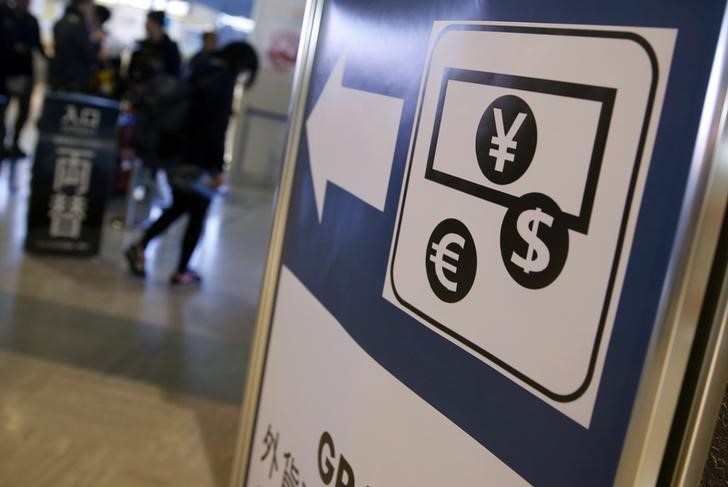Investing.com - The dollar edged higher against the yen on Monday, easing back from 18-month lows in holiday thinned trade, as investors looked ahead to U.S. factory data later in the day.
USD/JPY eased up 0.23% to 106.68 after falling to overnight lows of 106.16, the weakest level since mid-October 2014.
The dollar remained under pressure after tumbling 4.5% against the yen last week, the worst weekly performance since the 2008 global financial crisis after the Bank of Japan held off from implementing fresh easing measures, defying market expectations for further stimulus.
Over the weekend, Japan’s Finance Minister Taro Aso said the strength of the yen was "extremely concerning," but most traders expect Japanese officials will not intervene to stem the appreciation of the currency in the absence of support for such a move.
On Friday, the U.S. Treasury flagged concerns over economic policies in China, Japan, Korea, Taiwan, and Germany which all have a large current account surplus.
The Treasury said it would closely monitor the economic trends and foreign exchange policies of these economies.
In its report, the Treasury noted that the current dollar-yen market was "orderly" and reiterated all countries must abide by G20 and G7 commitments on exchange rate policies, widely seen as a call for Japan to limit foreign exchange interventions.
The dollar has weakened across the board since the Federal Reserve kept interest rates on hold last week and indicated that any future interest rate hikes would be data dependent.
Data on Thursday showed that the U.S. economy grew at the slowest rate in two years in the first quarter, with gross domestic product increasing just 0.5% form a year earlier.
Investors were looking ahead to U.S. manufacturing data later Monday to gauge the strength of the world’s largest economy.
The euro trimmed back gains after rising to six-month highs earlier, with EUR/USD last at 1.1475.
Sterling was trading close to 12-week highs against the greenback, with GBP/USD at 1.4653.
The U.S. dollar index, which measures the greenback’s strength against a trade-weighted basket of six major currencies, was near eight month lows at 92.89.
